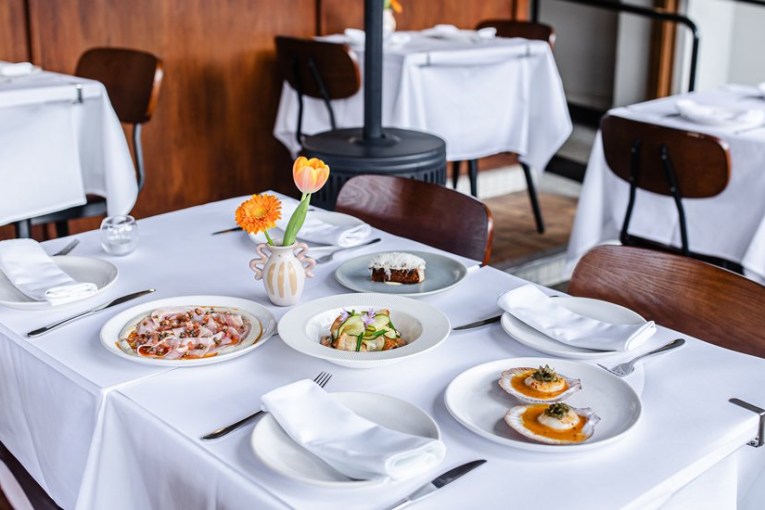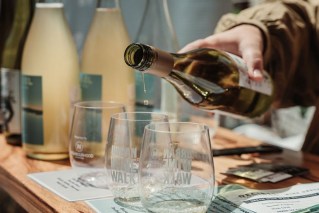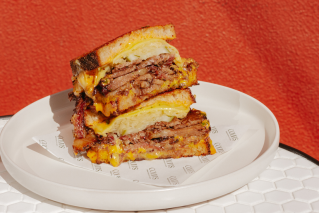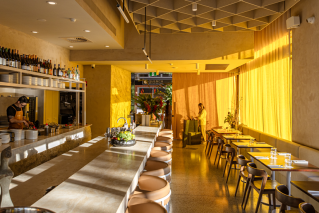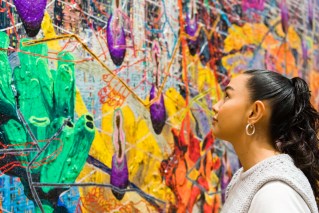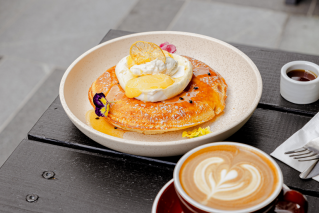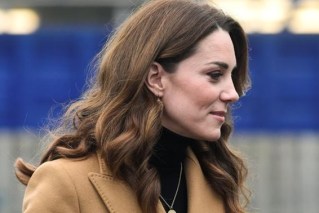As we gathered to celebrate 100 years of Margaret Olley, I swore I felt her in the room
An exhibition celebrating Margaret Olley’s centenary reminds us that it was in Brisbane where her art career was formed as a student at Somerville House, writes Phil Brown


Upstairs at Philip Bacon Galleries it was standing room only for the opening of the exhibition Margaret Olley 100 Years. The late great artist always drew a crowd and for a moment I imagined I saw her ghostly figure cutting through that crowd as only she could.
In her dotage Olley used a walker dubbed Moses because with her behind it she could part the multitudes who usually attended her exhibition openings in the same way that Moses parted the waters of the Red Sea.
The image was fleeting as I turned my attention to the opening speech by Olley’s great friend, Dame Quentin Bryce, former Governor-General of Australia. Dame Quentin painted a beautiful picture of Margaret Olley and a poignant memory of a lunch with her just before her death.
In State of Origin terms Margaret Olley was a blue, having been born in Lismore. But spiritually she was a maroon because she and her family lived in Queensland – Far North Queensland in her early years and later in Brisbane.
Dame Quentin pointed out that she attended school at Somerville House and that’s where her artistic career really began under the tutelage of teacher and artist Caroline Barker, a renowned artist’s mentor.
(By coincidence the companion show downstairs at Philip Bacon Galleries at the moment is by the much-loved Brisbane artist John Honeywill, a former art master at Somerville House. His show is exquisite and a great companion piece to the Olley upstairs)
I spoke to art dealer Philip Bacon before the exhibition and he told me that 200 people were expected for the opening. He raised his eyebrows a little, concerned that everyone had responded in the affirmative to RSVP and that the gallery would be chockers.
But that’s a measure of how loved Margaret Olley is. In 2019 Brisbane’s gallery of Modern Art staged a major exhibition of her work. I visited several times and each time I did, the gallery was packed. I thought I’d sneak in and have a bit of quiet time there one Monday morning but there was already a crowd waiting to get in when I arrived.
People love Olley. Her paintings are beautiful, inspiring, her interiors enchant and delight. In the current Brisbane centenary exhibition, a show in a commercial gallery worthy of any art museum, we see a fascinating range of works across her career. Yes, there are the sumptuous interiors of her home in Sydney, immortalized and recreated in the Margaret Olley Art Centre at the Tweed Regional Gallery just across the border. Olley fans make regular pilgrimages there and the gallery’s director Susi Muddiman was in Brisbane for the opening.
There were also some intriguing early works in the exhibition including a quirky piece featuring an owl, an ink and watercolor from 1952, Le Jardin des Tuileries, an early Brisbane architectural watercolor from 1966 entitled Evans Deakin, Montague Road, Brisbane and a beautiful portrait entitled Sepik Woman, Papua New Guinea from 1968.
Then the exhibition takes us across the years and into her Paddington home in Sydney with all its eclectic clutter. A classic work such as The yellow room, morning, is typical of her oeuvre.
While she lived much of her life in Sydney, we still like to claim her and as her close friend and dealer Philip Bacon points out it was here, she learned to be an artist, first at school and then at Brisbane’s Central Technical College in 1941.
She transferred to Sydney and graduated with first class honors from the East Sydney Technical College, now the National Arts School, in 1945.
In his catalogue introduction Bacon explains that she then began “her life-long pattern of travel, work and exhibitions”.
“In between times her boundless energy had her open an antique shop in Brisbane, buy and renovate numerous houses in Sydney and Newcastle and to keep up with an encourage a whole raft of fellow artists,” Bacon writes.
He and Olley met in the late 1960s and he described her as “intimidating to me, as a very young art dealer”.
But the pair hit it off and he points out that their working together started promisingly – “her first exhibition with my was in 1975, a total sell out of course” – and so began his long association with the woman he describes as “one of Australia’s best loved and most sought-after artists”. She was generous to a fault and donated many works to state galleries along the way.
There’s a work from that first Philip Bacon show, Marigolds and limes, in this exhibition. It sold for $925 in 1975 but the price tag now is $110,000.
Margaret Olley was the subject of two Archibald Prize winning portraits, one by William Dobell in 1948 and one by Ben Quilty in 2011. She was revered, it’s a simple as that.
I had the pleasure of having a spot of afternoon tea with her at Philip Bacon Galleries many years ago and it was one of the great moments of my journalistic career.
That night we waited in the crowded gallery for her arrival for the exhibition opening and we watched her navigating her way across the road with Moses, ready to part the crowds eagerly awaiting upstairs.
Many who were there that night were at Philip Bacon Galleries again on the weekend to pay tribute to her. Margaret Olley died in 2011 at the age of 88.
Margaret Olley 100 Years is on at Philp Bacon Galleries, 2 Arthur Street, Fortitude Valley until July 15
